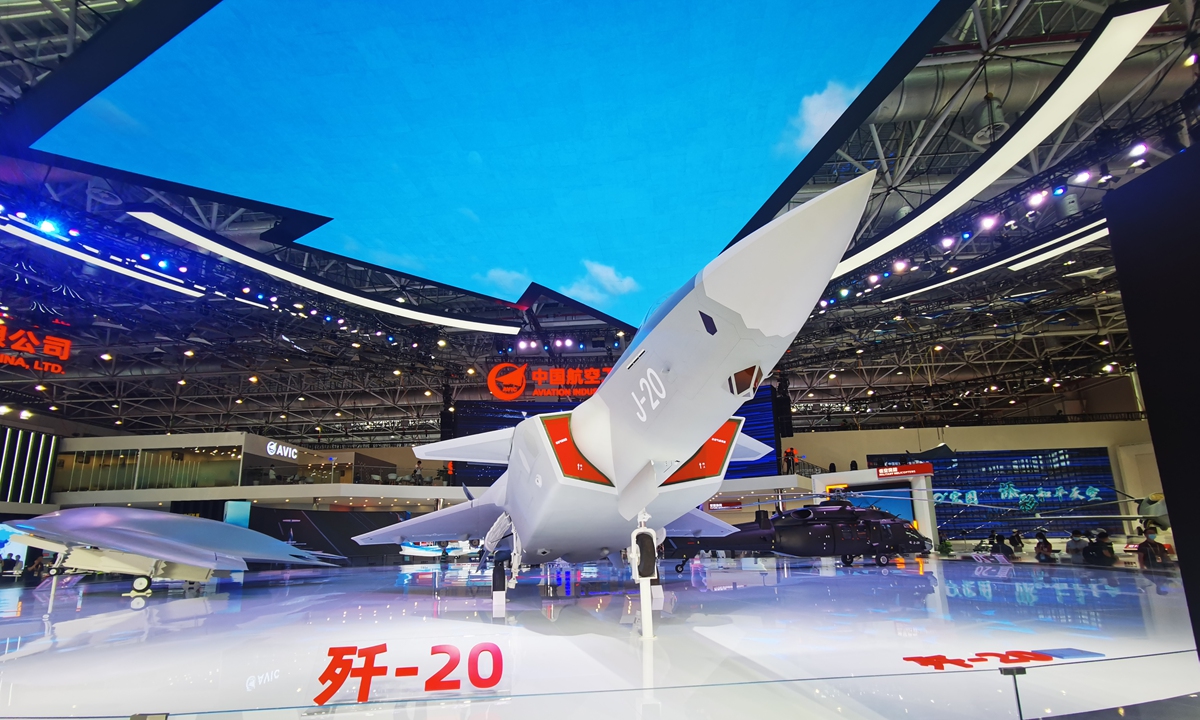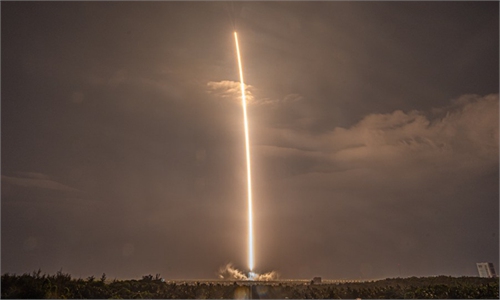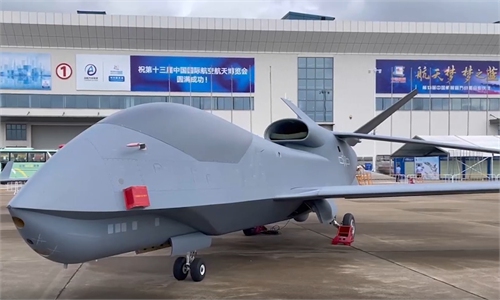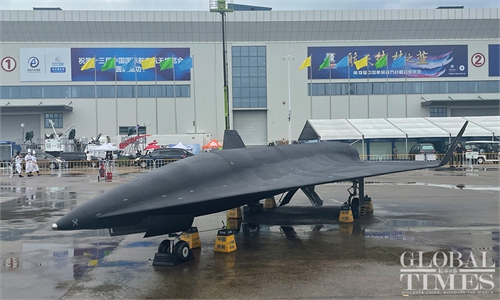
A model of a J-20 stealth fighter jet is on display at the exhibition stand of the Aviation Industry Corporation of China (AVIC), as the China Airshow 2021 in Zhuhai, South China's Guangdong Province, opened to media on Sunday. Models of other AVIC aircrafts of "20 family" including GJ-11 drone, Y-20 transport plane, FC-31 stealth fighter jet and Z-20 helicopter are also on display. Photo: Yang Sheng/GT
The 13th China International Aviation & Aerospace Exhibition (Airshow China) is set to be held in Zhuhai, South China's Guangdong Province, from Tuesday to Sunday, with nearly 700 companies from around 40 countries and regions participating in both online and offline events.
After being delayed by a year due to the global pandemic, Airshow China is expected to draw widespread attention for a peek into China's high-end manufacturing strength. At the show, leading Chinese aerospace companies will showcase latest innovations and breakthroughs in terms of new domestically developed technology, with carrier rockets, new-generation manned spacecraft, and high-altitude reconnaissance drone all set to be on display.
With the US trying hard to build a technological iron curtain that aims to decouple its high-tech supply chain from that of China and contain China's development, domestic technological progress in the aviation and aerospace sectors, as demonstrated by the Airshow China, will no doubt be of great significance. After all, China's ability to achieve breakthroughs in high-end development and manufacturing is crucial to the outcome of the so-called strategic rivalry between the US and China.
Aviation and aerospace is a field with significant potential for advanced technologies, indicative of a country's comprehensive scientific and technological strength as well as innovation capability. Each progress in the aerospace sector may contribute to the industrial upgrading and livelihood improvement.
Meanwhile, aerospace has always been among the top areas within the US' high-tech blockade on China. The independent development of the Chinese aerospace sector is a microcosm of the country's key technological breakthroughs and innovation, which is real leverage in the face of the US' relentless efforts to contain China.
On Saturday, Huawei Chief Financial Officer Meng Wanzhou returned to China after being illegally detained for nearly three years in Canada at the behest of the US. But there is no sign that the US will stop the crackdown campaign on Chinese technology companies. US Commerce Secretary Gina Raimondo said only last week that her department would continue efforts to block Huawei from obtaining advanced chips.
Meng's homecoming and Huawei's continued sanction may not seem to be related with the Airshow China. But the two developments actually both underline, from different angles, the urgency and necessity for China's independent innovation and technological breakthroughs in the face of the US' suppression.
It is almost certain that China will continue to face a technology blockade imposed by the US in some key technological fields, including aerospace and semiconductor. That would further compel China to rapidly explore its own path of industrial development. Admittedly, China still lags behind the US when it comes to overall high-tech development, but China has the ability and confidence to play catch-up through independent innovation.
As China's technological developments continues to advance, domestic replacement is expected to increase across China's high-tech sector. It is the US' ill attempt to suppress China's development that makes it impossible for China to stop pursuing independent technological breakthroughs. Still, this doesn't mean that China is unwilling to open up or cooperate with other countries. We always believe there should be as much cooperation as possible in the field of advanced technology.



